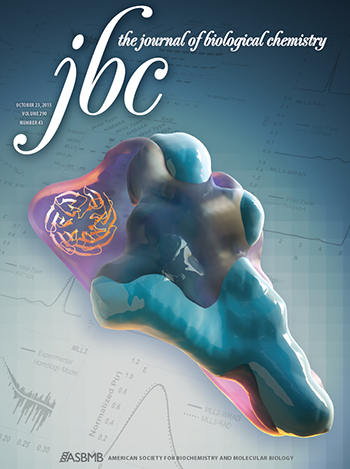X-RAY RUNS: Apply for Beamtime
2017 Nov 1 - Dec 21
2018 Feb 7 - Apr 3
2018 Proposal/BTR deadline: 12/1/17
2018 Apr 11 - Jun 4
2018 Proposal/BTR deadline: 2/1/18
The biology of human diseases and disorders is highly complex. In many cases, despite a great deal of detailed structural knowledge, understanding mechanisms is still a long way off. The MLL3 (mixed lineage leukemia 3) protein, for example, is a member of the SET1 family of histone-modifying enzymes, which plays a critical role in regulating transcription of genetic information in humans. Misregulation of histone modification is associated with different cancers and developmental disorders. MLL1 is well studied and has been used to predict how MLL3 and other SET1 proteins function, but the validity of these predictions is uncertain – do all family members really work the same way?
The Cosgrove laboratory at SUNY Upstate Medical University has developed an experimental reconstitution system that has allowed them to dissect the molecular mechanisms of methylation of histone 3 at lysine 4 (H3K4) by MLL family complexes, addressing questions about complex formation, mechanism of lysine methylation, and inhibitor design. In a recent publication Stephen Shinsky and Michael Cosgrove delved into the unique role that one of the subunits, WD-40 repeat protein-5 (WDR5), plays in the methyltransferase activity of the MLL3 core complex [1]. They deployed solution small-angle x-ray scattering (BioSAXS) at the CHESS G1 experimental station to characterize the MLL3 core complex and substructures. Information about this complex is limited, as no high resolution structures of MLL3 or its complexes are currently available. In addition, although some cryo-EM reconstructions of human MLL1 core complex have been reported, there is currently no information about solution structures and dynamics of any SET1 family complex.

On The Cover: The mixed lineage leukemia 3 (MLL3) core complex catalyzes monomethylation at histone H3 lysine 4 (H3K4). Unlike other MLL family core complexes, the WDR5 subunit of the MLL3 core complex inhibits H3K4 methylation activity. The cover shows the BioSAXS solution structure of the MLL3 core complex assembled with WDR5 (purple) superimposed with that of the core complex without WDR5 (blue). These structures give insight into the spatial location of WDR5 (orange) within the MLL3 core complex and its mechanism of inhibition (cover image by Victor Garcia).
The beautiful reconstructions of the MLL3 core complex and the complex with WDR5 omitted, aligned with each other and with the WDR5 crystal structure, appear on the cover of the Journal of Biological Chemistry this past month (see figure). The structures show that addition of WDR5 has little effect on the conformation of the rest of the complex. This is consistent with biochemical studies showing that MLL3 and other components of the core complex can assemble into a functional system in the absence of WDR5, and that adding WDR5 actually inhibits the activity of the complex. This situation is quite different from that in MLL1, where WDR5 is required for assembly of an active complex. Hence different members of the SET1 family use homologous components in distinct ways, and need to be analyzed individually.
In a bigger context, the Cosgrove group focuses on understanding the molecular mechanisms of “epigenetic gene regulation”, a field of biology that strives to understand how cells inherit information that is independent of changes in DNA sequence. The importance of this topic is shown by the fact that mutations in genes coding for MLL family enzymes are responsible for human developmental disorders such as Kabuki Syndrome, Weidman-Steiner Syndrome, and Kleefstra Syndrome. MLL family enzymes are also found to be mutated in cancers such as non-Hodgkin lymphomas, pediatric medulloblastomas, lung, renal, and prostate carcinomas. This work presents new information that will facilitate future studies to identify the cellular machinery involved in regulating MLL3 core complex assembly and the molecular mechanisms by which WDR5 reduces MLL3 methyltransferase activity. In addition, this work adds to our understanding of how additional regulatory mechanisms can influence the methyltransferase activity of important SET1 family members.
Reference:
[1] Shinsky SA, Cosgrove MS, “Unique Role of the WD-40 Repeat Protein 5 (WDR5) Subunit within the Mixed Lineage Leukemia 3 (MLL3) Histone Methyltransferase Complex”. J Biol Chem. 2015 Oct 23; 290 (43):25819-33. doi: 10.1074/jbc.M115.684142. Epub 2015 Aug 31.
Submitted by:
Ernest Fontes, CHESS and Marian Szebenyi, MacCHESS, Cornell University
11/13/2015
